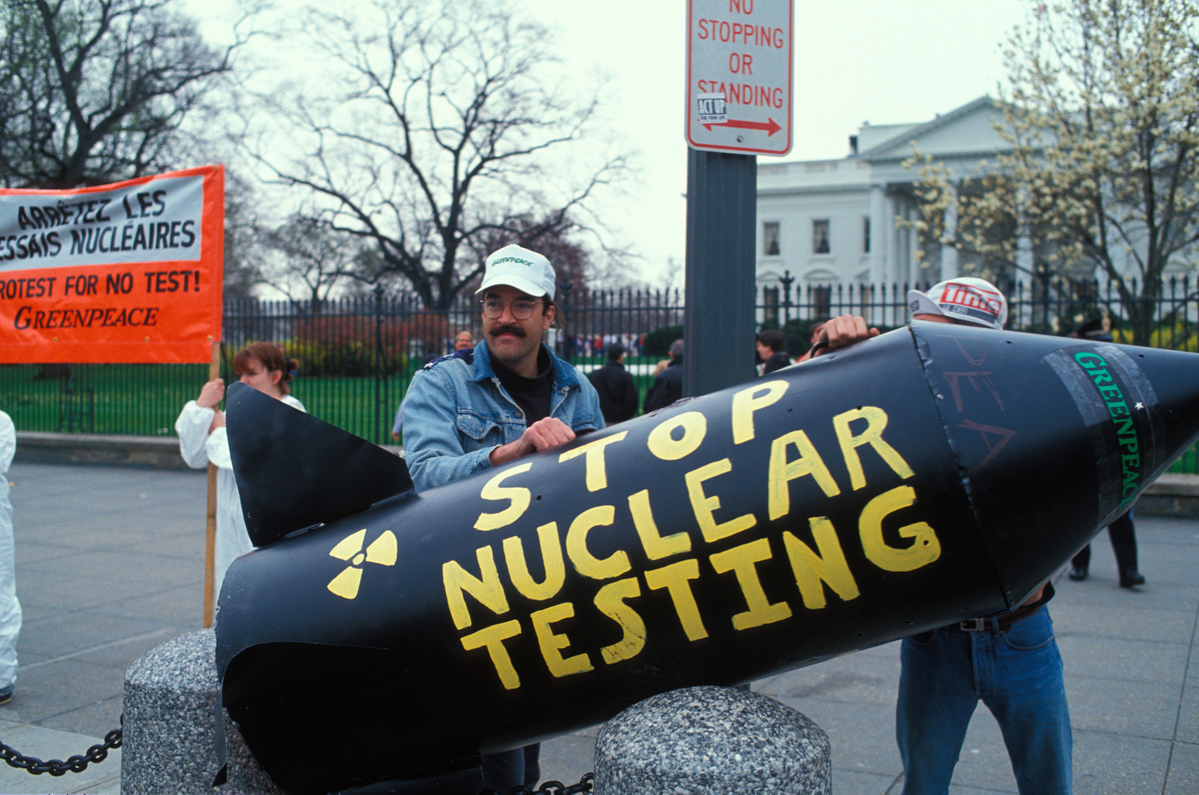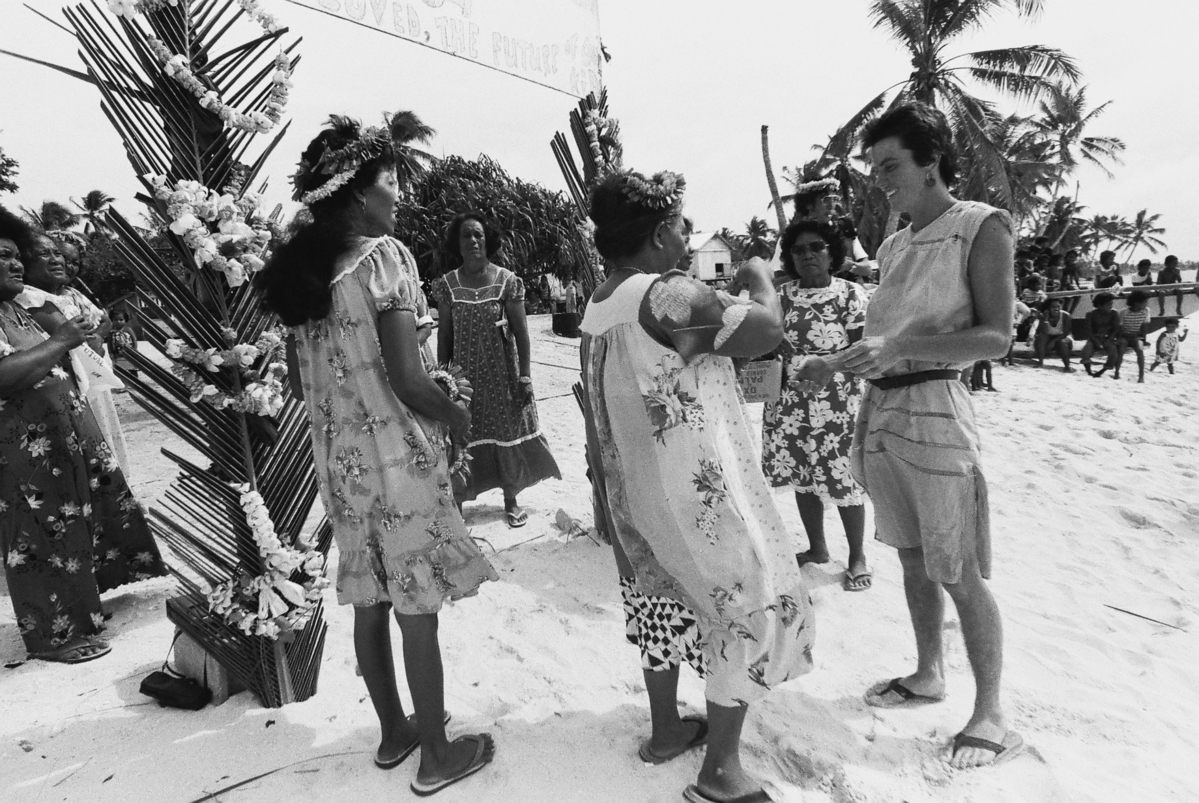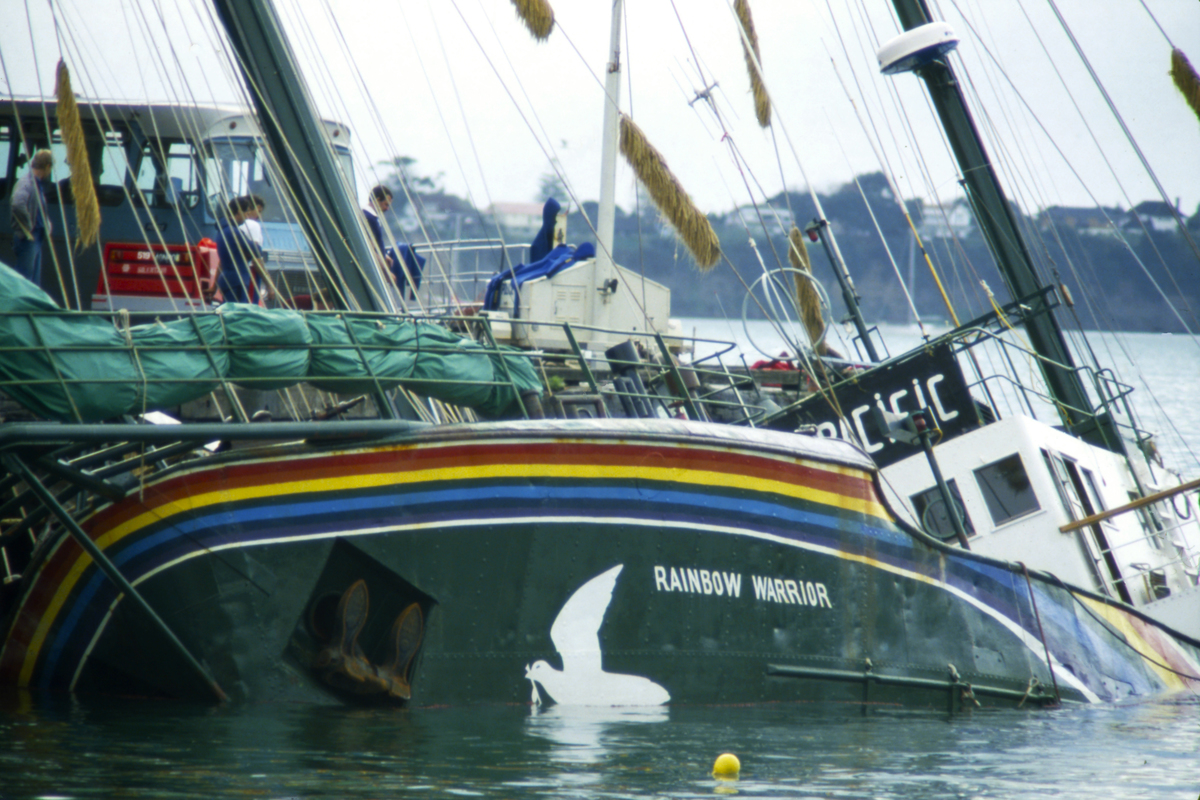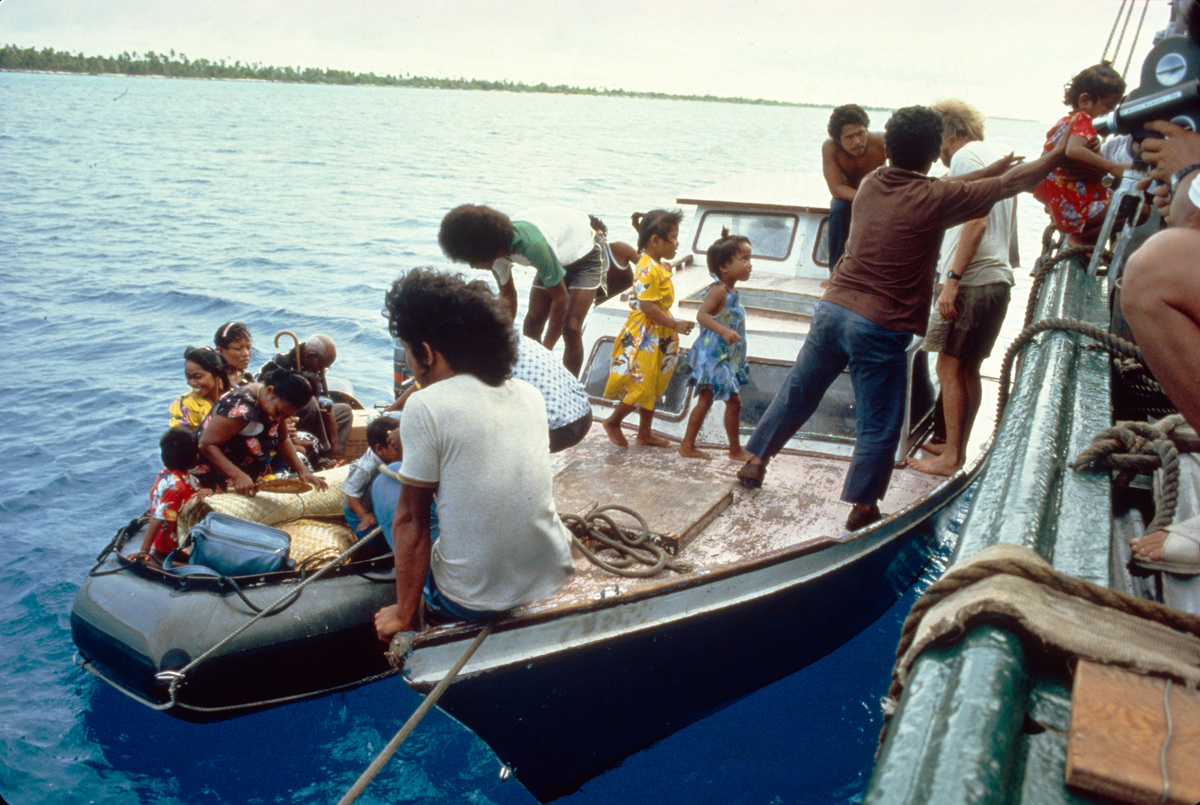Today marks the International Day against Nuclear Tests. Since 1945, more than 2000 nuclear tests have been carried out at more than 60 locations around the globe. Nuclear weapons were designed and tested to be the ultimate doomsday weapon, setting a legacy of fear and destruction. No other human invention had as much impact on the story of humanity in recent decades.

Greenpeace demonstrates against nuclear testing. The protest was held to encourage the first President George Bush to sign a bill that laid the foundation for the now ten year old moratorium on nuclear testing.
Nuclear tests have shaped Greenpeace. They have been a part of our story as an organisation from the outset. They have been a part of my own story, both personally and professionally.
I was 24 when I first witnessed, in person, the disastrous impacts of nuclear testing on people, and on the environment. It was 1985 and I was sailing as a deckhand aboard the Greenpeace Ship, the Rainbow Warrior, on an anti-nuclear campaign in the Pacific. Our first mission was to help 360 members of the Rongelap community to relocate away from their home island in the Marshall Islands in the North Pacific to escape contamination from a round of US nuclear testing some years earlier.

Women of Rongelap island welcome Bunny McDiarmid as crew members from the Greenpeace ship Rainbow Warrior arrive ashore on the atoll.
For ten days we helped women, men, elderly and children, many suffering the medical consequences of being exposed to radiation. They had to leave a beloved homeland populated by their ancestors for decades. The land they loved could no longer sustain them – instead it was making them sick. The tragedy inflicted on them was by no fault of their own. Those inflicting it did so with little or no regard to those being impacted. In fact they were glibly told “it was for the good of mankind and to end all world wars.” The stupidity behind the thinking that weapons of mass destruction were the path to real security and peace unfortunately has not left many of the halls of power even today. This little known story in the Pacific deeply affected all of us involved and it was clear that the connection between the violence we do to Earth and the violence we do to people mattered little to those who were doing it.
From Rongelap we sailed to New Zealand. The Rainbow Warrior was supposed to lead a flotilla of boats sailing east to Moruroa in French Polynesia, where the French authorities were doing their nuclear testing. Our plans were dramatically altered in a manner none of us could predict. On July 10 1985, French secret service agents, under orders from their government, planted two bombs on the hull of the Rainbow Warrior. The bombs exploded and the boat sank within minutes. Our friend and colleague Fernando Pereira, was murdered in the blast.

The Rainbow Warrior is in Marsden Wharf in Auckland Harbour after the bombing by French secret service agents.
Our Rainbow Warrior never made it to Moruroa. She was damaged beyond repair. She was there in spirit though. An even bigger flotilla of yachts sailed to the Pacific to protest the nuclear testing. Money was raised to help pay for a new Rainbow Warrior, which returned to the Pacific many times, until the testing was stopped in 1996.
Things are different now. Full-scale nuclear testing has largely come to a halt thanks to people who stood up, and kept standing up, in the thousand different ways it takes to change the course of history. Governments, who for decades argued that nuclear tests were ‘clean’ and ‘safe’ can no longer hold on to that lie.
Many details related to the tragic history of nuclear tests remain hidden, but the truth is coming out. Declassified papers from the French Ministry of Defence show that nuclear tests in the South Pacific in the 1960s and 1970s were far more toxic than has been previously acknowledged. Plutonium fallout hit the whole of French Polynesia. Tahiti, the most populated island, was exposed to 500 times the maximum accepted levels of radiation.
Justice has been painstakingly slow and incomplete for the victims of nuclear testing. Only in the early 1990s did the US acknowledge the damage caused to the Rongelapese and after long legal battles agreed to pay some compensation. It was not until 2010 that France acknowledged that there could be a compensation process (complex and limited to a small geographical area) for veterans and civilians impacted by the tests. Many victims are still struggling to be recognised.
Just like the trauma they inflict, the impact of the testing cannot be cleaned or erased – the contamination created by radiation will impact not only those living in the region now, but also future generations. There are no technologies capable of effectively cleaning up radiation. Nearly 30 years later, many of the Rongelapese still live in exile.

Evacuation of Rongelap Islanders to Mejato by the Rainbow Warrior crew in the Pacific 1985. Rongelap suffered nuclear fallout from US nuclear tests done from 1946 – 1958, making it a hazardous place to live.
I am inspired by the stories of those, whose lives have been irreversibly impacted and have turned their tragedy into a struggle, for the sake of the greater good. The Republic of the Marshall Islands, where Rongelap is, has now taken legal action against the nine nuclear states for their failure to disarm. In Japan, the Hibakusha, surviving victims of the bombings of Hiroshima and Nagasaki, lead a campaign against nuclear weapons. We must not let them stand alone.
Nuclear armed states around the world continue to possess, develop and modernise nuclear weapons, thinking this means security in a complex and fast changing world. This is a travesty. But there is also a growing number of states speaking against this. Last year, majority of UN member states supported a resolution to establish a UN working group for nuclear disarmament, that has now recommended negotiating a new treaty banning nuclear weapons. This will not be an easy road, but certainly one worth taking.
We can not let having weapons of mass destruction be what defines security for people on this little planet we all call home. Instead let the bravery and sacrifice of millions write a different chapter in our civilisation’s future, that we overcame and won against nuclear testing, against nuclear weapons.
Bunny McDiarmid is the International Executive Director at Greenpeace International.
